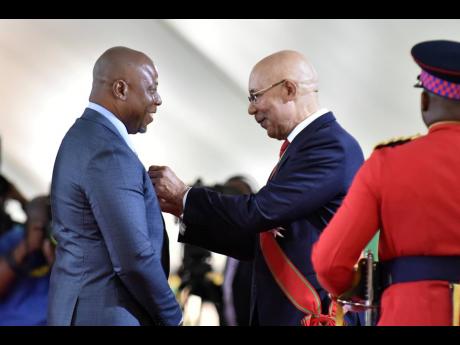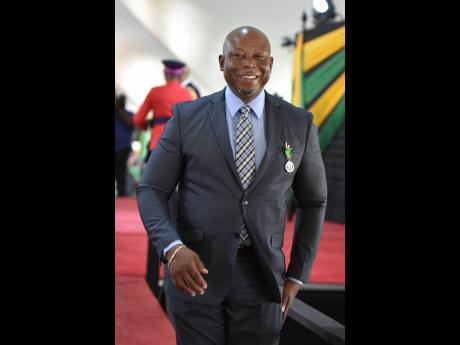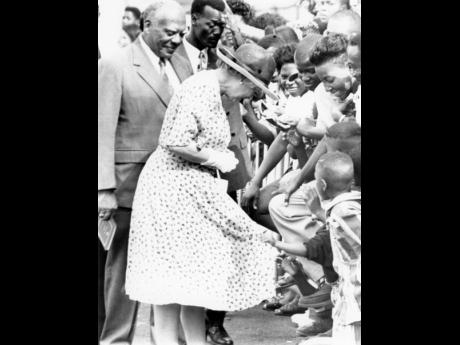Rudolph Brown: the would-be chef who became a photojournalist
Having studied cooking while enrolled at Vauxhall High School in east Kingston, Rudolph Brown might well have become a chef.
“Yes, man, I love the kitchen to this day,” Brown, a veteran Gleaner photographer, said in an interview days before the pomp and circumstance of National Heroes Day during which he received the Badge of Honour for Meritorious Service.
However, the son of a single mother began his long journey to photojournalism when the then schoolboy began cleaning windows and sweeping the shop of Graham’s photo studio next door his house in Kingston.
One of the owners was moved by his interest and began to teach him the basics of the business. He learned to trim passport-size photos, then began accompanying photographers on school package shoots as well as setting up studio cameras. He later took passport pictures while processing negatives in the darkroom.
His fun memory from his teenage days at Graham’s is of coverage of a funeral using a sun pack flash, which was connected to a power pack on his shoulders.
Snapping busily away, Brown said he stood on a stool, looking over the coffin, when he heard “Boom!” The power pack exploded and almost gave him heart attack.
“I frighten out hell. Remember, it’s a funeral mi deh. That happen over dead? I tremble, I tremble, I tremble suh tell,” he recalled, laughing heartily at the memory while grateful that he did not fall on to the coffin.
He left Graham’s to work with Alty Benjamin as a darkroom technician and conducted photo shoots before a falling-out between the two.
In 1989, honing his darkroom skills and stamping his authority, he covered entertainment with Balford Henry, including the memorable clashes at the annual Boxing Day dancehall festival, Sting.
“When Super Cat and Ninja Man came on stage, they started to throw words after each other. It went on for a long while and then bottle start fling. As a youngster, I wanted to be in the thick of things. So if you watch the clip right now, you will see me jumping over some boxes running and taking pictures at the same time,” he recalled.
Both Brown and Ian Allen have credited Junior Dowie and Winston Sill for their artistry.
“There was no one greater than Winston Sill with darkroom photographs,” said the 55-year-old.
Brown, who walks with a limp caused by a childhood crash injury, has covered the late Queen Elizabeth II twice and won an award for a photo showing a child holding on to her dress.
In his 33 years with The Gleaner, Brown has covered state visits, political rallies, motorcades, the ordinary and extraordinary, winning numerous awards.
He recalls the era of electoral cheating before the late 1990s massive investment in the voting system and political will for reform.
Brown remembers capturing photos of ballot boxes being thrown over the fence from a polling station at St George’s Girls’ School. He also photographed a politician heading in the direction the box was being taken.
Political violence was rife then and Brown admits to fearing for his life. He cropped out the politician’s image to show only the ballot box being lifted over the fence.
“There is no flight to take you out of the country,” he remembers telling himself.
On the eve of the next election five years later, Brown said that his car was fired on after criminals closed the gate to the complex where he lived. Two politicians would later pay for the damage to his vehicle.
The Gleaner pulled him from election day coverage the next day.
COLOURFUL MEMORIES
Brown has colourful memories, too, of the protagonists in the great – and toxic – political rivalry that spanned three decades: Michael Manley and Edward Seaga.
He recalled Manley – in his second chapter as prime minister – uttering choice words when a banker was absent from a meeting he called at Jamaica House. (The comment was deemed so explosive, his editors opted to go without it because he did not have it on tape).
Brown was also a victim of attackers in the political upheaval of the Jamaica Labour Party at the National Arena in the 1990s. Supporters of Pearnel Charles Sr, a challenger, were beaten after clashing with Seaga’s backers.
Seaga sent Brown a letter of apology and a box of cigars.
Brown’s run-ins with the police are legendary.
While covering a football match between Jamaica and the USA, he parked beside the Bob Marley statue. Another man parked beside him.
“I saw a policeman back his gun, claiming that somebody took his parking spot. I saw when he backed his gun and same time I began taking photos, when I heard, ‘Boom!’ He fired a shot, and punched me in my face. At first, I leaned on the statue before punching him back,” Brown recalled.
Other police personnel rushed to the scene and restrained the cop, said Brown. The photographer’s camera and watch were damaged in the melee.
It took two years for the matter to be called in court.
The photos that have forever haunted him are of a man shot and killed by the security forces in Denham Town and whose body was tied to the bonnet of the army vehicle and driven around in the community.
The Gleaner printed the photograph captioned ‘Not a scene from a movie’, sparking outrage from Amnesty International.
He would be pepper-sprayed by the police as he went to get a Valentine’s Day gift for his girlfriend at the time. He began snapping away with his phone after he saw a policeman accost a man in the plaza. Brown said he wore his work identification, but was told to move.
He was pepper-sprayed all over his face.
“It was awful, and a lot of persons came and were defending me. The police started to spray everybody,” he said.
The matter is still in court.



